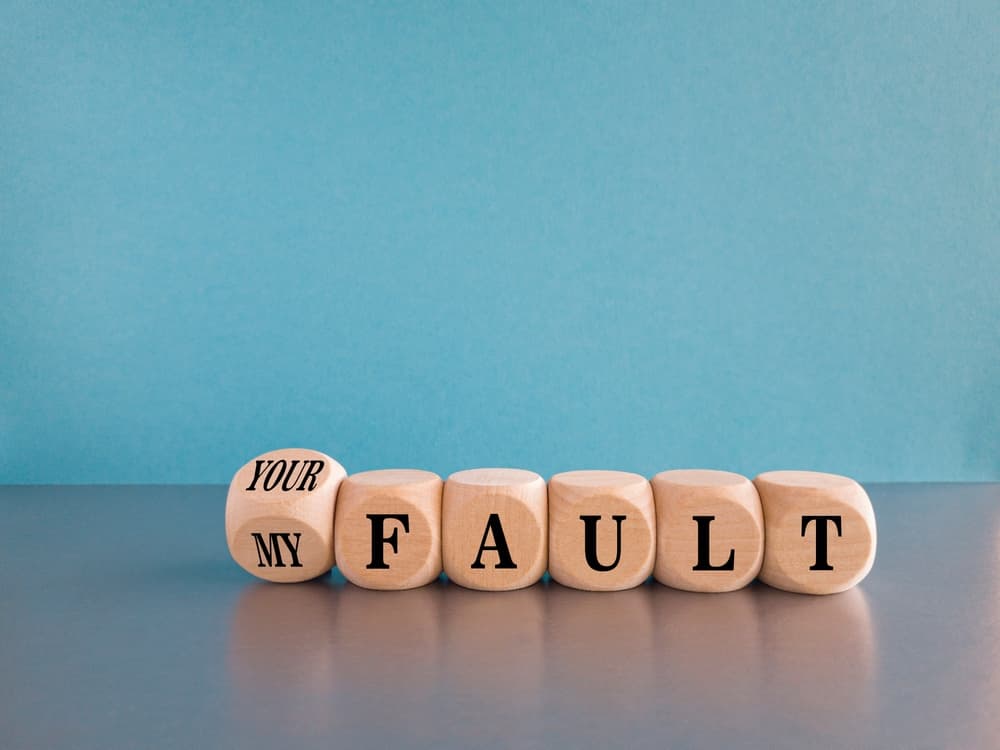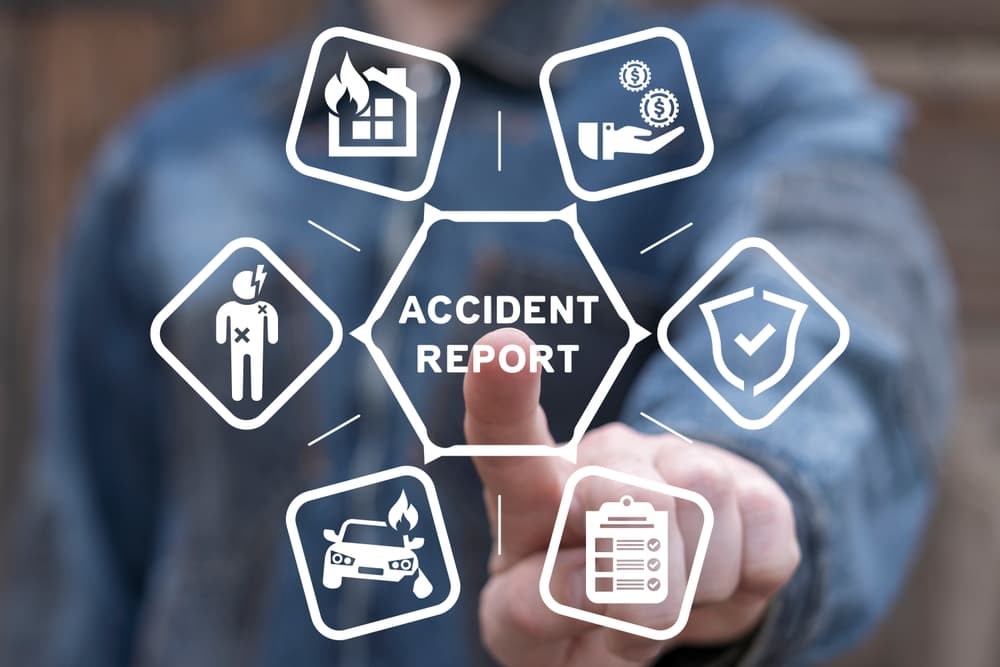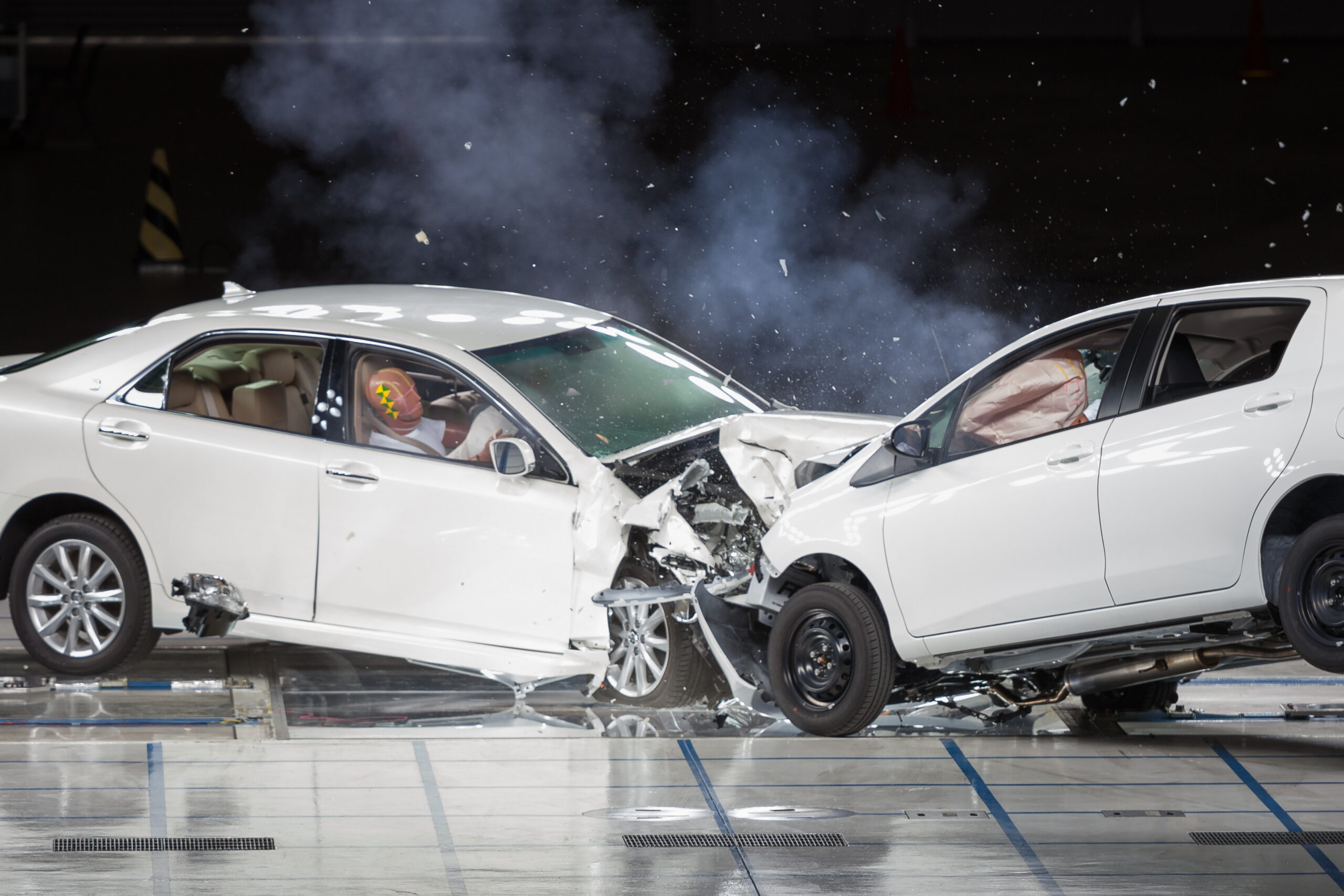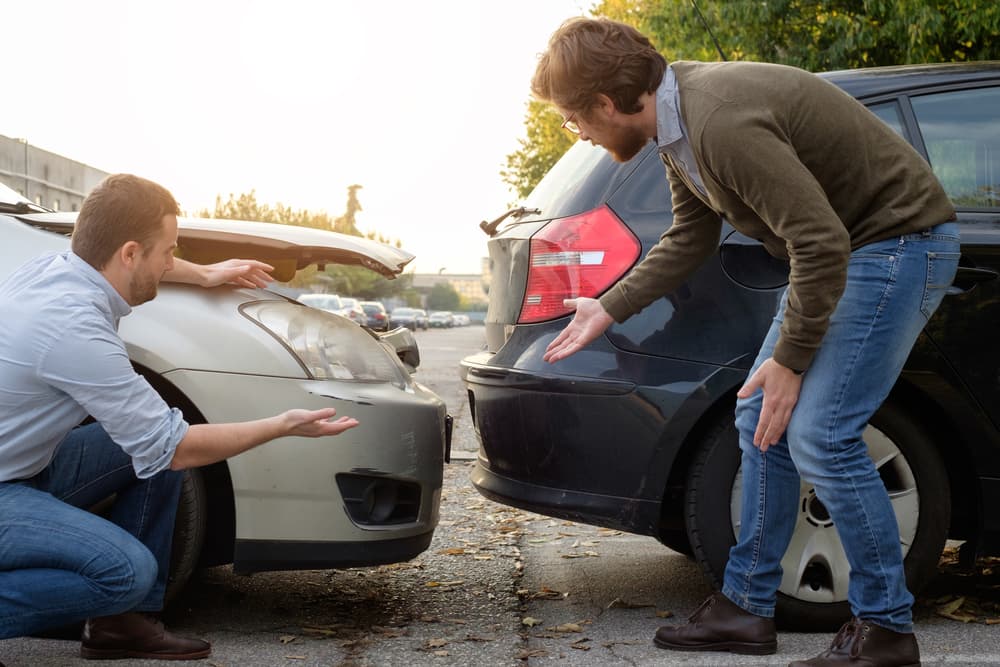
Some auto accidents put us at a higher risk of serious injury than others. T-bone collisions are one of them. Unlike a rear-end or head-on crash, a T-bone crash leaves the driver or passenger much more exposed to serious injury. The sides of vehicles don’t have nearly as much mass or protection as the front and rear, so T-bone crash injuries are often severe.
If you have suffered an injury in a T-bone collision, you must prove that another party was at fault to receive compensation. Read on about how fault is determined in a T-bone accident. If you have questions about your specific situation, speak to a car accident attorney today.
What Is A T-Bone Accident?
A T-bone accident is also known as a broadside crash or side-impact collision. It refers to when one car hits another on the left or right side, most often at a red light or stop sign in an intersection. These crashes are called T-bone accidents because the shape of the crash resembles a T. T-bone accidents are most often caused by:
- Running red lights or stop signs
- Turning left across oncoming traffic
- Distracted driving, such as by a cell phone
- Turning when the view is obstructed
- Road rage and aggressive driving
- Not yielding the right of way
- Speeding or misjudging distances
High speeds are often part of T-bone crashes, so there is a good chance you have serious injuries.
Why Are T-Bone Crashes So Dangerous?
When your car is hit in the front or rear, a serious accident can occur with injuries. But you are somewhat protected by several feet of steel, engine, trunk, bumper, and car seats. Modern vehicles are designed so that the heavy and bulky car parts absorb much of the crash forces. The car may be severely damaged or totaled, but the vehicle may absorb much of the impact, reducing injuries. However, when a car is T-boned, and you are seated on the side that was hit, only a window and door lie between you and the oncoming vehicle.
Critical issues in a T-bone crash that determine the severity of injury are:
- The speed and size of the vehicle that hits you
- The area of impact and where you are seated in the vehicle
Generally, the larger and faster the vehicle, and the closer it strikes to where you are seated, the greater the chance of injury. In a recent year, 5,500 people died in T-bone accidents, which was 23 percent of all auto accident deaths that year.
Who Is At Fault For A T-Bone Crash?

One driver is usually at fault for a T-bone accident. Most often, the car that slams into the other vehicle on the side is at fault, but there are cases where the car being hit is liable. It depends on who had the right of way and which driver failed in their duty of care and caused the crash. Many T-bone crashes happen because one driver runs a red light or stop sign, causing one party to hit the other in the side of the other vehicle.
Some T-bone accidents don’t happen at intersections, such as when leaving a parking lot. In this case, the driver leaving the lot must ensure no traffic in either direction before executing a turn. Another case is when someone makes a U-turn across traffic, and someone hits them broadside.
Unfortunately, it’s common for both drivers to dispute who was at fault, and witnesses may disagree about which driver had the right of way. This is one of the reasons you should have an experienced car accident attorney fighting for you. Your attorney will review the crash evidence and determine who the liable party was.
In some accidents, someone other than a driver can be at fault for the broadside collision. For example, if a driver tried to stop at a stop sign but their brakes gave out, it can be the auto manufacturer’s or mechanic’s fault. Your car accident lawyer will understand how the accident happened and who is to blame.
Proving who the at-fault driver was in the T-bone accident involves your car crash attorney proving the following:
- Another driver had a duty of care to you, such as to drive safely, stop at red lights, and not injure other motorists.
- Another driver violated their duty of care by, for example, running a red light and slamming into your driver’s side door.
- You suffered injuries and other losses due to the violation of duty.
- You can receive compensation for your losses, such as money for medical bills and lost income.
Evidence Your Attorney Will Use To Prove Fault
Proving fault in a T-bone crash is how you can receive compensation for your accident injuries. There are many pieces of evidence your car accident attorney will review and may use to prove another party was at fault:
- The police report. This is important evidence that may help establish who caused the accident. Other evidence will be required to establish fault, but if the police report cites the other driver, it may help your case.
- Video surveillance footage: Many businesses these days have video cameras, and one may capture some or all of the accident. Your attorney can subpoena the video records and use them to prove liability.
- Your video or photo evidence: If possible, after the accident, take video or photos of the accident scene and vehicle positions before first responders move them. This evidence can be important to prove fault. If you cannot do so, ask a passenger to take videos and photos.
- Tire marks and other physical evidence at the crash scene: Helpful tire marks and vehicle crash debris may prove who caused the accident. Photos and videos should be taken of this evidence.
- Eyewitness statements: Eyewitnesses often provide critical evidence to determine fault for a T-bone accident. If you can, speak to eyewitnesses and get their contact information. They might leave the scene before the police and your attorney get involved, so obtaining their contact details is important.
Common Damages And Compensation In T-Bone Accidents
The damages you can receive in a T-bone accident claim or lawsuit depend on several factors:
- The severity of your injuries: If you have a brain injury and shattered bones in several parts of your body, your settlement will be greater than if you simply broke your wrist.
- The amount of medical expenses: People with severe injuries have more extensive and costly medical bills. Someone with the injuries described above can need at least months, and possibly years, of medical treatments and rehabilitation.
- The amount of lost earnings: People with severe injuries may be out of work longer than those with minor injuries.
- The amount of insurance available: Even if you have $100,000 in damages, you might not receive all of it if the at-fault driver has only $25,000 of coverage. This is a common issue in settlements and is another reason to have a skilled and tenacious personal injury lawyer fighting for you. Your lawyer will search aggressively for every possible insurance policy that can be used to compensate you.
- The skill of your car accident attorney: It pays to hire an experienced auto accident attorney to negotiate the best settlement for your injuries.
In a T-bone accident or other personal injury claim, there are two types of compensation you can receive:
- Economic damages: These are compensation for medical expenses, lost earnings, medical device costs, property damage, and other out-of-pocket costs. Receipts, bills, and medical records can easily prove these damages. However, future medical expenses need to be carefully calculated with the help of your legal and medical teams.
- Non-economic damages: These damages are intended to pay you for intangible losses, such as pain and suffering, mental anguish, disability, and disfigurement. Proving these damages is harder than economic damages, but an experienced auto accident attorney will fight for the most money. The insurance company can use a per diem system where you are allotted a certain amount of money per day for pain and suffering. Or, it can assign a number between one and five for your pain and suffering, with five being the worst. If your pain is worth a three, and your economic damages are $25,000, you might receive $75,000. Non-economic damage compensation is always open to considerable negotiation, however.
What Is The Average T-Bone Crash Settlement Amount?
There is no typical car accident case, including T-bone accidents. Every crash is different, injuries are different, and people respond in various ways to certain injuries. So, the fact that a head injury case in your city settled for $1 million doesn’t mean that your head injury case will settle for the same amount.
The best way to judge what your case might be worth is to have the case reviewed by a car accident attorney.
Common T-Bone Accident Injuries
Most T-bone crash injuries are caused by blunt force trauma. This means that the injuries happen when a car occupant violently contacts part of the oncoming vehicle or a part of their own vehicle, such as a door, window, or dashboard. Common T-bone crash injuries are:
- Crush injuries to the abdomen, chest, or pelvis. Injuries can include damage to major blood vessels, bones, and organs.
- Injuries to the brain and head, ranging from a minor concussion to skull fractures and open or closed head brain injuries.
- Back and neck injuries, such as spine fractures, whiplash, and damage to the spinal cord.
- Burns if the fuel tank of one or both vehicles is ruptured.
- Scarring, disfigurement, PTSD, anxiety, or depression.
When To Hire An Auto Accident Lawyer
Sometimes, it isn’t hard to see when someone causes a car accident. If another car slams into the back of yours at a red light, it’s fairly easy to see who was at fault. But T-bone accidents can be harder to decipher.
If the police come to the crash scene, the officer may or may not determine who was at fault. The police also can determine that you were at fault when you weren’t. Jurors tend to believe the police when determining fault, so you will need a skilled attorney if this happens.
Even if the police don’t blame you, it is easy for you to get at least some of the blame when you aren’t at fault. The other driver may blame you, and witnesses may offer conflicting stories. Any time fault is disputed and there are significant injuries, you are best served by hiring an attorney. Your lawyer is your dedicated legal advocate who will determine fault, what your damages are, and negotiate for the best settlement.
What Happens If You Don’t Hire A Car Accident Attorney?

Were you seriously injured in a T-bone accident caused by another driver? You should contact a car accident attorney to represent you. If you don’t, likely, you will not receive fair compensation for your damages. Most accident victims don’t know what their case is worth; you may believe you should only get money for your current medical bills, but you can be eligible for far more.
The at-fault driver’s insurance company will be delighted if an attorney does not represent you. The adjuster knows that non-attorneys with injuries are much easier to buy off with small settlements. The insurance company will try to give you a fraction of what you deserve.
An attorney will ensure that doesn’t happen. Your lawyer will fight for the most money for you and ensure you are treated fairly. Remember that a car accident attorney isn’t paid unless you are, so there is no out-of-pocket cost for their services.
Speak To A Car Accident Lawyer Now
Did another driver T-bone you at an intersection? You may have severe injuries, but don’t worry: A car accident lawyer with experience in T-bone collisions can get the compensation you deserve. If your case is proven, you can get fair compensation for your medical bills, future medical care, lost earnings, pain and suffering, and more.
Contact a personal injury lawyer in your area today for a free consultation. Remember, there is no cost for the consultation.

For years, Galine, Frye, Fitting & Frangos has been fighting for the rights of our clients, recovering millions of dollars for accident victims and their families. We understand the complexities of your case and are here to guide you through every step.


